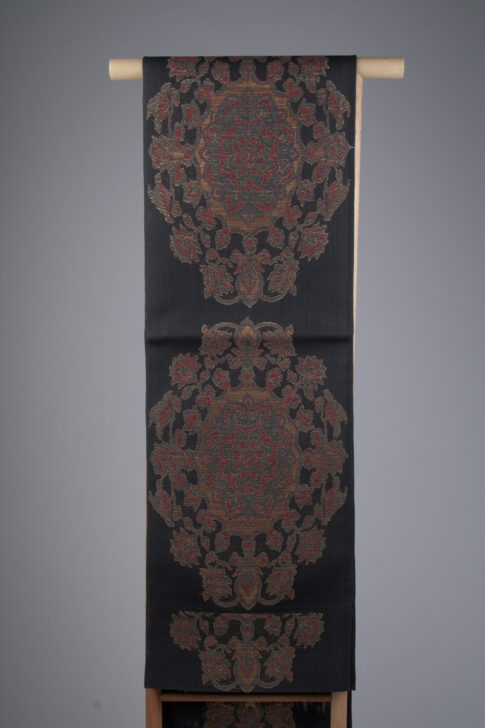Black silk gauze fukuro obi with large woven floral ‘hosoge’ medallions
Japanese

Description
Black silk gauze "fukuro obi" with large woven floral (hôsôge?) medallions
---
Unlined kimono, called hitoe (meaning “single layer”) kimono, generally are worn from the beginning of June through the end of September. Hitoe kimono are made of silk, hemp, or cotton, and worn over a nagajuban (underkimono).
For highly formal occasions such as weddings, lined kimono are preferred, worn with summer obi such as the black one here, which is made of light, silk gauze with large floral medallions. According to Iwata Shizuko, this obi was worn with hômongi, one of the formal types of kimono.
Motifs on summer kimono and obi are often related to the season. The light blue obi with a gold-leaf-wrapped design of irises is for early summer, when these flowers are in bloom. Abstract designs based on water and waves are popular as well. Subdued, cool colors, such as those of the green hitoe kimono on display, are preferred for summer kimono and obi.
(Wrapped in Silk & Gold Exhibition, Summer 2010)
Subject Matter:
Fukuro obi with woven floral medallion designs.
Physical Description:
Black silk leno weave (gauze) fukuro obi; floral medallion patterns woven in lacquered red, gold-coated paper (kinran). and a synthetic turquoise metal-coated paper.
Usage Rights:
If you are interested in using an image for a publication, please visit https://umma.umich.edu/request-image/ for more information and to fill out the online Image Rights and Reproductions Request Form.